Underwater unmanned vehicles REMUS 600 in Ukraine
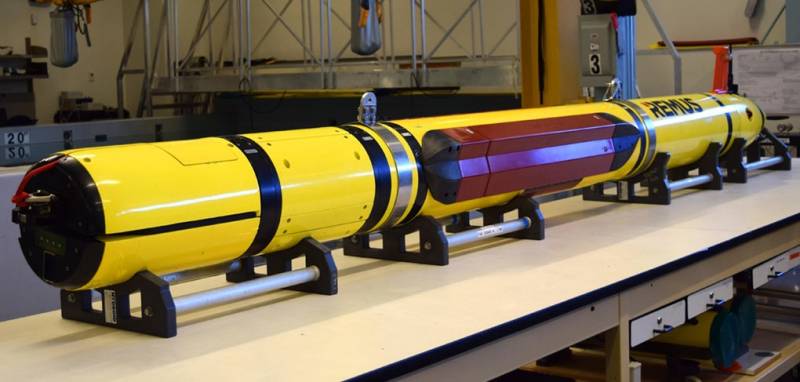
Exhibition layout of the REMUS 600
Last year, the Kiev regime received from the UK a variety of means and complexes for use at sea. Together with other products, uninhabited underwater vehicles of the REMUS family were supplied. It was reported that with their help, Ukrainian formations would be able to monitor and conduct reconnaissance in the Black Sea. In addition, there were suspicions about the possible combat use of such equipment.
Under the plausible excuse
Fearing Russian amphibious assaults, in the spring of 2022, the Ukrainian fleet carried out mining in the waters in the western part of the Black Sea. For various reasons, a significant part of the delivered mines fell off the anchors and became a threat to navigation in general. The Kiev regime habitually accused the Russian Navy of mining, and also requested anti-mine weapons from foreign patrons.
After lengthy discussions and evaluations, at the end of August, the Royal Navy of Great Britain expressed its readiness to provide the necessary equipment. To search for and neutralize mines, it was planned to send autonomous uninhabited underwater vehicles (AUVs) of the REMUS family to Ukraine. The British side also planned to train Ukrainian personnel and ensure the operation of such equipment.
The promised equipment went to Ukraine only in the fall. As it became known, REMUS 600-type complexes were shipped in order to help. In October, a curious video with the training of Ukrainian operators appeared on foreign resources and soon disappeared. The video showed the preparation of "Remus" on the carrier ship, the launch of the device on the water and the performance of certain tasks under water. Then the AUV was lifted back to the deck. All the key elements of the complex were captured in the frame.
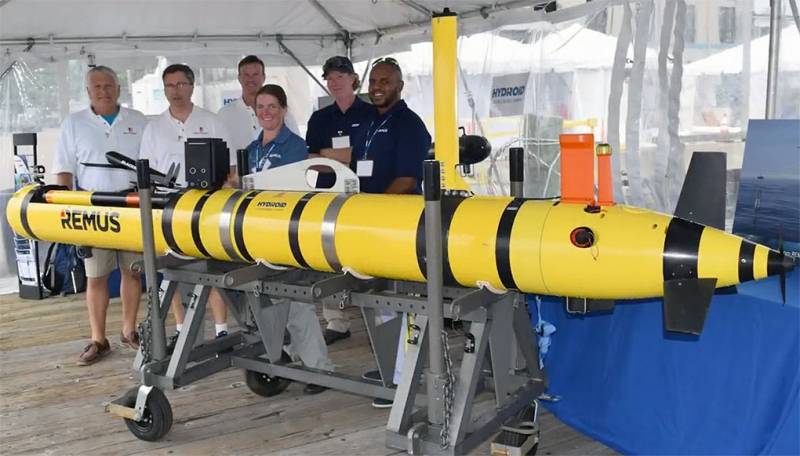
Application Issues
The exact goals and objectives of the resulting device or devices were not disclosed. According to the assurances of the British side, REMUS 600 was allocated to search for sea mines. However, it was obvious that they would try to use them for reconnaissance as well. In addition, there are suspicions about the possible use of foreign technology as a weapon or its carrier.
On the night of July 17, the Kiev regime again attacked the Kerch bridge. As a result of the explosion under the structure, the span was damaged and people died. How exactly and by what means this attack was carried out is still unknown. However, several versions and assumptions have already appeared. According to one of the circulating versions, the explosive charge was delivered to the bridge using an imported REMUS 600 AUV.
However, such an assumption is unlikely to be true. It has not yet been officially confirmed, and besides, it contradicts the declared characteristics of the REMUS 600. The carrying capacity of this device is insufficient to transport a charge capable of causing the observed damage. At the same time, such AUVs could be used at the attack preparation stage.
"Measurement device"
The development of a family of unmanned underwater vehicles REMUS (Remote Environmental Measuring Units - “Remotely controlled environmental measurement device”) was carried out at the turn of the nineties and two thousand years. The author of the project was the American company Hydroid, owned by the Norwegian Kongsberg Maritime. She was responsible for the overall coordination of work and designed the basic underwater platform. The on-board equipment complex was ordered by the Woods Hole Oceanographic Institution.
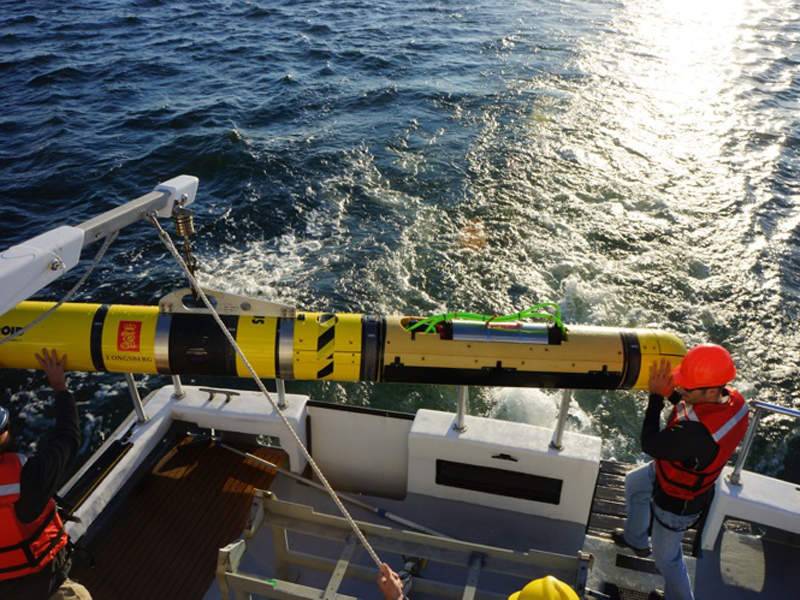
Apparatus on the crane of the carrier vessel
At the beginning of the 100s, the first representative of the family, the REMUS 300 apparatus, came out for testing. The number in its name indicated the working depth of immersion in meters. Later, on the basis of this design, two other samples were created, designed for 600 and XNUMX m.
The US Navy is interested in REMUS devices. They conducted a series of tests and studies, and in 2003 they used AUVs in preparation for the invasion of Iraq. REMUS 100 worked in the Persian Gulf and searched for naval mines. In the future, the American fleet made new orders for vehicles of different models.
In the middle of the XNUMXs, the Remus was ordered by the British Navy. They are used to patrol important water areas and underwater research in the interests of fleet. A few years after the start of operation, in the tenth years, the existing complexes were modernized with an increase in the main characteristics. How their capabilities changed in this case was not reported.
It is known that the products of the REMUS series enjoy a certain popularity in the international market. Over the past two decades, these devices, incl. REMUS 600 have been repeatedly ordered by third countries. Last year Ukraine added to the list of users. It is noteworthy that, unlike other states, she did not buy American devices, but received them as assistance from another buyer.
Technical features
The REMUS 600 product, like other devices of the family, looks like some modern torpedoes and has the same dimensions. A cylindrical body with a hemispherical nose is used; the stern is made conical and carries the propeller and rudders. Fairings for target equipment are provided on the sides. The total length of the model "600" reaches 3,25 m with a diameter of 324 mm. Product weight in air - 240 kg, incl. no more than 50-60 kg payload.
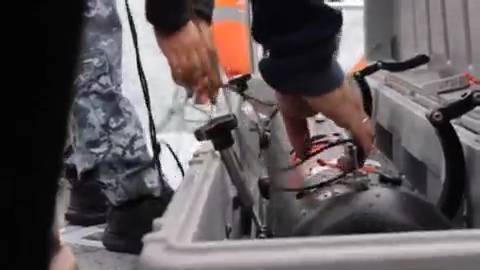
In the process of training Ukrainian operators, autumn 2022
"Remus" is made completely electric. The source of energy in swimming is a battery of lithium-ion batteries. It supplies power to the brushless propeller motor, control systems and target equipment. Such energy allows the AUV to reach a speed of 4,5 knots. Economic speed - 3 knots. In this mode, the propeller engine develops a power of only 42 watts, and 60 watts are allocated to other equipment. Depending on the driving modes and the composition of the load, the duration of work on a single charge can reach 60-70 hours.
The device is equipped with an autopilot capable of carrying out the programmed program and moving along a given route. There is an inertial navigation system, depth gauges (general and for determining the depth in front of the apparatus), etc. Heading and depth control is carried out by conventional planes.
The REMUS 600 is supplied with a laptop with dedicated software. With the help of the latter, a sailing program is compiled, telemetry is processed and the device is directly controlled (if possible). On shore / on deck, the Remus connects to the computer with a cable. At sea, radio communication is provided according to different standards - but only when surfacing.
The target load is placed in specially provided compartments of the case. REMUS 600 can carry a video camera and several types of side and front view hydroacoustic stations. The collected information is stored on the built-in storage device until it can be transferred to the operator. It is reported that the proposed HAS can be used to solve various problems. First of all, this is bottom mapping and search for objects in the water column. In the latter case, the AUV can participate in the search for and clearance of sea mines.
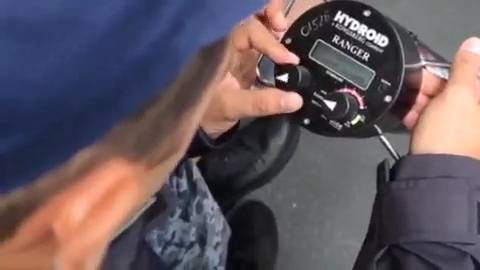
In theory, REMUS series devices can be weapon carriers. So, with their help, you can deliver mines or charges weighing tens of kilograms. With appropriate means, such a charge can be dropped at the target. It is impossible to exclude the use as a one-time "kamikaze", but this is economically unprofitable.
Threats and protection
The REMUS 600, like other samples of this family, is a completely modern and efficient underwater platform for accommodating various equipment and solving related problems. The rather large age of the project is compensated by its regular upgrades, design optimization and improvement of the main characteristics.
The working capabilities of such complexes are determined not only by the parameters of the AUV itself, but also by the compatible load. In this regard, the Remus system is also developing - the proposed GAS and OES are being updated, and it is also possible to develop new devices with improved characteristics.
However, the development of the platform and its load may face certain restrictions. To get rid of them or get around them, you will need a serious revision of the project, incl. impractical due to its complexity.
Nevertheless, REMUS series AUVs continue to operate in a number of countries, incl. in the relevant divisions of the naval forces. Despite all the limitations, they are used to solve the tasks of monitoring and reconnaissance. In the recent past, the Kiev regime received such a technique and, probably, also began to use it. How exactly he uses foreign devices is unknown, but it can be assumed that they will try to get maximum results from these products.
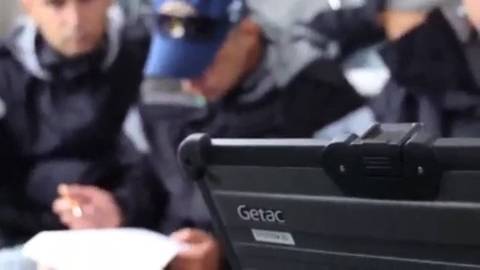
First of all, REMUS 600 is interesting as a means of underwater reconnaissance. There may be attempts to study important Russian facilities on the coast or at sea in order to organize attacks and sabotage. In addition, the possibility of using British technology directly as a strike weapon cannot be ruled out. Regardless of the plans of the enemy, the AUV problem requires appropriate measures.
The answer to a potential threat, first of all, will be the correct organization of anti-submarine and anti-sabotage defense. With the appropriate means of protection, surveillance, etc., an enemy underwater vehicle will not even be able to enter the protected water area. If he succeeds, he will be able to conduct reconnaissance only until the moment of defeat and / or destruction.
Measures taken
Foreign partners-patrons help the Kyiv regime with the supply of certain weapons and auxiliary systems. First of all, military aid intended for ground formations gets fame. However, marine equipment is also supplied, such as surface and underwater unmanned vehicles of various classes and types.
Unlike some other imported models, the REMUS 600 AUV is not combat and does not pose an immediate threat. At the same time, reconnaissance should be carried out with its help, according to which sabotage and strikes are then planned. Therefore, the Russian Navy and other structures pay great attention to the issue of protecting water areas, and the vast majority of foreign reconnaissance or strike equipment cannot solve their tasks.
Information